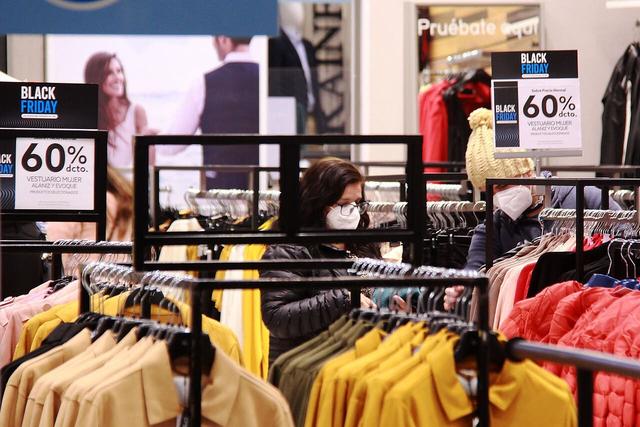After analyzing the women's sizing policies used by the main companies in the country, the National Consumer Service (SERNAC) detected that there is a great disparity in measurements for the same size and type of garment.
The greatest differences were found in jeans, since in the waist measurement of size “S” and “L” there are differences of 23.84% and 22.96%, respectively, between the average and the largest and smallest size found.
In addition, through this study, SERNAC detected that the non-existence of unique parameters causes a series of problems for consumers. An example of this are the difficulties when requesting a refund or exchange because the product did not fit the person due to the difference in centimeters for a certain size.
Additionally, given the growth of electronic commerce, the lack of a single standard makes it difficult to select clothing, which complicates the purchase decision added to the limitations of sanitary measures that prevent trying on garments.
To the above, it is worth mentioning that the recent validity of the Pro-Consumer Law that establishes the retraction or repentance of the consumer in online commerce within 10 days of receiving the product.
In fact, in one year, SERNAC received more than 2,000 complaints associated with changing clothes, and at least 200 of them refer directly to problems with sizes.
The director of SERNAC, Lucas Del Villar, commented that "for female consumers, the issue of sizes is not only a matter of consumption, but it can also have an impact on their self-esteem, as our surveys show."
Results of the study

To carry out this first diagnosis, SERNAC officiated in 2021 11 companies that correspond to 12 national retail stores that sell women's clothing in the country. These are the companies Corona, Falabella, Family Shop, Fashion's Park, Hites, Kliper, Surprice, La Polar, Paris, Ripley, Tricot and Zara. In addition, 4 international platforms (Shein, AliExpress, Asos and Wish) were reviewed as references.
How to Diagnose Peripheral Artery Disease http: //bit.ly/cJNjwt
— Ailyn Manalaysay Fri Nov 05 09:11:17 +0000 2010
The study included sizes of a number of women's apparel products, including T-shirts, jeans and dresses.
Among the main findings, it is concluded that only four companies (33.33%) indicate that they have some study or record of the consumer's anthropometric profile. In addition, 75% of the companies admit that they do not keep a record of changes, returns or claims regarding garment sizes.
When analyzing by type of garment, in the case of jeans and dresses, 33.33% of the companies indicate that these garments have size equivalence information.
When the companies were consulted for the existence of a table of equivalence of their sizes, 58.3% indicated that they did not have this background, while 16.7% indicated that they had a table for each of their brands . 25% indicate that only some of their brands have such tables.
Disparity in measurements of the same size
After the analysis, it can be concluded that there is a disparity in measurements for the same size and type of garment, between the different brands and stores.
In the case of jeans, the largest differences were found, on average. In the waist measurement for sizes "S" and "L" differences of 23.84% and 22.96% were detected, respectively, between the average and the largest and smallest size found.
Regarding the differences between one jean size and another, the most relevant findings were detected in the waist and hip measurements between sizes “M” and “L”, where they varied by 8.4 cm and 7 .0 cm respectively when increasing one size. While the difference between going from a size "S" to a "M" is around 4 cm.
Changes and returns during the pandemic
When inquiring about changes or returns of products during the pandemic, 50% of companies indicate that returns have increased or at least have risen .
Among the causes that are indicated as a possibility of the increase, the closure of fitting rooms is indicated, as well as the increase in electronic commerce during the pandemic period.
When inquiring about changes or returns of products during the pandemic, 50% of companies indicate that returns have increased or at least have risen.
Given all the aforementioned problems, a project called the “Size Law” was recently presented, which seeks to create a unique system of clothing sizes in Chile. This initiative is promoted by the model and activist Antonia Larraín, together with the deputies Gael Yeomans (CS), Marcela Sandoval (RD) and Erika Olivera (RN).
48 Best Parka For Extreme Cold In 2021 Based On 7300 Reviews
The best Amazon irons to get impeccable clothes
ESPN David Beckham's Inter Miami can become a great team. But first he has to win MLS Editorial Picks on ESPN+ ESPN FC 100
This is how “Prime try first, pay later” works: The new Amazon service